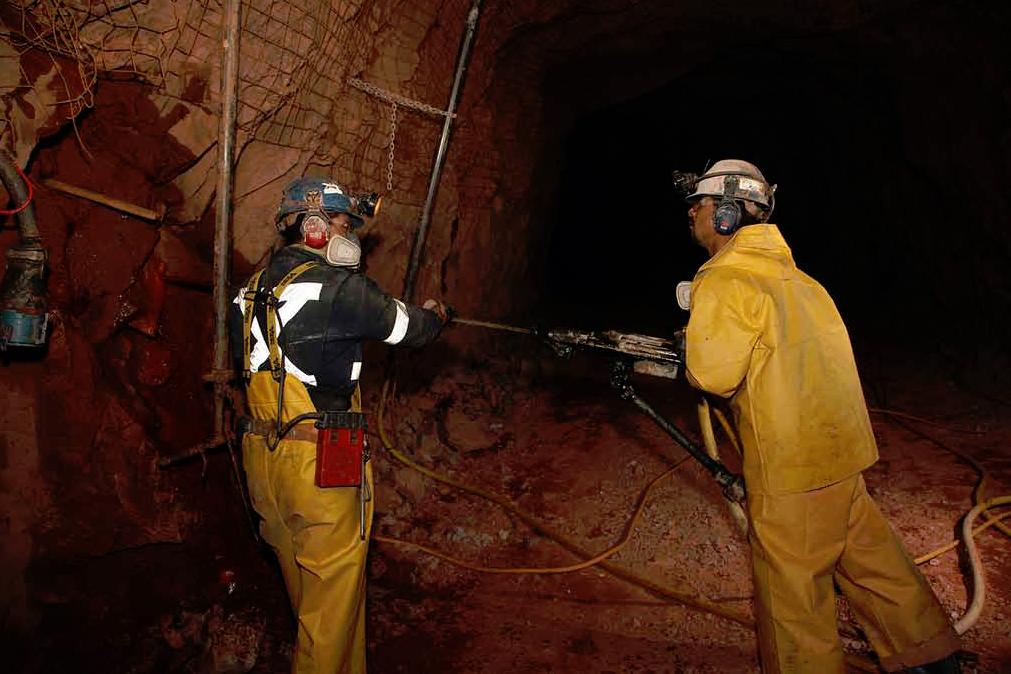
Agnico-Eagle’s first venture into Mexico’s legendary Sierra Madre gold and silver belt is helping to deliver record results.
Gold is one of the most precious and highly sought-after commodities, treasured by every civilization in the world for thousands of years. While its most common use is in jewelry, gold is also an indispensable material in science and technology because of its unique physical properties—it is highly reflective and malleable, ductile, an excellent conductor, does not rust, tarnish or corrode, and does not dissolve in water or most acids. No wonder, then, that it is so highly prized by investors in times of economic uncertainty.
Toronto-based mining company Agnico-Eagle is an international gold producer, with operating mines in Canada, Finland and Mexico. Its LaRonde mine in Quebec is the largest gold mine in the world in terms of reserves, but its newer mines are now its prime focus of attention.
One of these is Pinos Altos in Mexico, in the legendary Sierra Madre gold and silver belt, 220 kilometers west of the state capital Chihuahua. The property was acquired in 2006 after encouraging results from an initial drilling campaign. In August 2007 a favorable feasibility study led to the decision to develop the mine commercially.
Pinos Altos is Agnico-Eagle’s first mine in Mexico. Open pit mining began there in 2008 from the Santo Niño pit, and an underground mine beneath the pit began production in 2010. It poured its first gold in July 2009 from the Santo Niño heap leach, and in September from the mineral processing plant, achieving commercial production in November 2009.
The operation has proven and probable reserves (including the stand-alone Creston Mascota development) containing 3.4 million ounces of gold and 94 million ounces of silver. The mine is expected to produce 168,000 ounces of gold and 2.2 million ounces of silver in 2011, and to average 175,000 ounces of gold and 2.3 million ounces of silver from 2012 through 2015, with a mine life extending to 2028.
The nearby Creston Mascota project was built in 2010 as a stand-alone pit and heap leach operation. It is expected to produce 31,000 ounces of gold and 65,000 ounces of silver in 2011, and to average 55,000 ounces of gold and 120,000 ounces of silver per year from 2012 through 2015. The first ore was placed on heaps in Q4 2010, with commercial production expected in Q2 2011. The company expects to develop several other satellite deposits, which could include the Sinter, Cubiro and San Eligio zones.
A drill program on the Cubiro zone, approximately 10 kilometers northwest of the main Santo Niño pit, has produced encouraging results. By the middle of 2009, new discoveries at Cubiro were being highlighted as one of the most impressive finds of the year, though other zones have subsequently revealed deposits much larger than initially anticipated. The drill program at Sinter, for example, a parallel zone approximately two kilometers to the north of the Santo Niño pit, has also achieved highly promising early results, demonstrating a better average grade and thickness than anticipated. Agnico-Eagle’s focus for 2011 is therefore on resource conversion, and expanding the known zones, including an underground exploration program at the Cubiro zone.
The majority of the current Pinos Altos mineral resource is located in the steeply dipping Santo Niño vein zone, which is up to 40 meters thick and 2.5 kilometers long. It has a vertical extent of more than 750 meters, and remains open to the west and at depth. Creston Mascota is about 1,000 meters long and between four and 30 meters thick. The Sinter zone is four to 35 meters wide and almost 900 meters long, with over 350 meters of vertical depth. Sinter is being evaluated for its open pit mining and heap leach potential.
In February this year, Agnico-Eagle reported record results for 2010, thanks largely to a full year’s production at Pinos Altos and its Kittila Mine in Finland, as well as the startup of production at the Meadowbank mine in March 2010, combined with higher realized prices for gold, silver, copper and zinc.
The company's payable gold production for the full year 2010 was a record 987,609 ounces, compared with 492,972 ounces in 2009. Agnico-Eagle's goal is to increase gold reserves from its existing portfolio of mines and projects to more than 22 million ounces by year-end 2011. Exploration drilling during 2010 resulted in 2.9 million ounces of gold being converted from the resource category into the reserve category, but in spite of this conversion, resources continued to grow at several of the mines and projects. The company expects to invest approximately $145 million in exploration during the year.
"The growth plan that transformed the company over the past several years has resulted in record gold reserves and record annual financial and operating results," said Sean Boyd, vice-chairman and chief executive officer.
"As Agnico-Eagle begins the next five-year growth phase from our expanded production platform, our strategy remains unchanged. The focus continues to be to increase our gold reserves, gold production, earnings and cash flows, each on a per-share basis."
DOWNLOAD
 AGNICOeagle_MAR-APR11_NA-b.pdf
AGNICOeagle_MAR-APR11_NA-b.pdf













